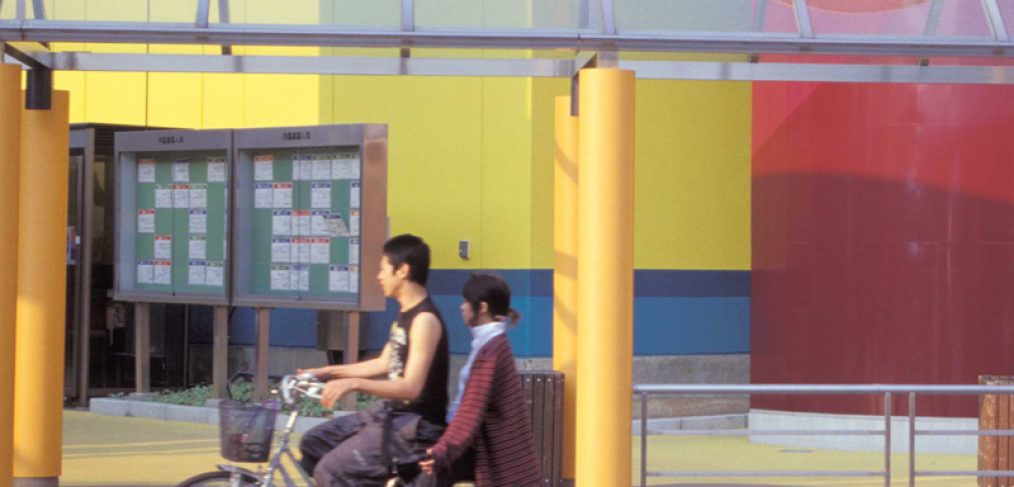
The First Lady, SoulCycle and Healthy Cities
Bikes are a healthy alternative to cars, but what would a truly bicycle-friendly city look like? Nate Cherry discusses workout trends, new routines and health-conscious cities.
A Soulful Phenomenon
In a New York Times article earlier this year, Michelle Obama professed her love for SoulCycle, the TriBeCa-based studio cycling chain known for its heart-pounding, mind-body fusion workouts led by fit, attractive instructors and attended by hordes of affluent urban dwellers in an environment that combines the rhythmic excitement of a nightclub with the meditative atmosphere of a yoga studio.
The First Lady’s SoulCycle habit is just one example of how she lives out her commitment to health and fitness in her personal life, and her “Let’s Move” campaign takes that passion public. From harvesting seasonal fruits and vegetables in the White House garden to encouraging schools to provide more nutritious food options and integrate physical activity into the curriculum, Let’s Move is intended to help provide the country’s children with a healthier start in life and prevent childhood obesity.
Kudos to Ms. Obama. But let’s take a step back— how can we not only encourage people to lead a healthy lifestyle, but also create cities with the necessary infrastructure to support a healthy lifestyle?
Turning a Daily Chore into a Daily Routine
America is interested in fitness more than ever, but boutique studios and health clubs have a limited impact on the well-being of the overall population. While they benefit from an undeniable cachet with a certain demographic, these classes are expensive, not to mention eventually repetitive and boring. Studies show that most fitness club memberships tend to lessen in use over time, and we all know that even the hottest fitness trends come and go. Remember Curves? How about Jazzercise?
Pursuing fitness can also be time consuming. Few of us can expect a security detail and motorcade to get us to and from our daily workout, and stopping for even just an hour or so at a health club on the way to work or home takes a lot of time out of a busy schedule.
For these reasons, people are increasingly interested in ways to integrate fitness into their daily routine. Cycling is particularly appealing— it saves time and money, is good for the environment and helps reduce stress. Add to this the fact that the oft-talked-about Millennial is less focused on cars as a status symbol, more aware of their impact on the environment and more inclined to bike or take public transit, and it’s no surprise that the total number of automobile miles traveled nationally decreased for the first time ever in 2014, and more cars are being “retired” than sold. More urbanites are relying on a bike for shopping, commuting and other activities.
Bike-Friendly City
Progressive developers are savvy to these trends and are investing accordingly. For example, Related Development now owns Equinox Health Clubs, SoulCycle and Citi Bikes in New York City. The success of bike share systems throughout major metros has been well substantiated. But bike share services are valuable only where bike lanes are aggressively instituted into the street grid—where cars, transit, pedestrians and cyclists live in harmony.
Ultimately, good planning is about rewarding the behaviors a community wants to encourage while making negative behaviors harder to maintain. Cheap gas and investment in new technology and infrastructure have long catered to drivers; similar funding and initiatives could be transformational for cyclists and facilitate a significant shift toward a healthier, more sustainable land use pattern, helping to loosen the grip of the automobile on our society and our culture.
Bike-Friendly Infrastructure
Pieces of the bike-friendly urban infrastructure could include:
Bike centers: a centrally located, easily accessible place— often close to public transit hubs or parking structures— at which to rent, store and repair a bike, as well as support facilities such as showers and retail with products that serve bikers’ needs. Check out Chicago’s Bike and Park.
Complete streets: wider roadways designed to safely and conveniently accommodate pedestrians and cyclists in addition to drivers.
Linear park trails: a connective bike trail with the potential to become a catalytic investment strategy, offering places for rest and passive recreation as well as education about the local ecology. Milton Street Park in Los Angeles, adjacent to the Ballona Creek bike trail, is one such example.
Promotional events: a social and educational event, like CicLAvia, where temporary cycling routes are created on existing streets, allowing those concerned about safety to bike through the city in a car-free environment and learn about safe cycling strategies.
Bike valet: this service allows bikes to park securely where they otherwise could not by providing attendants to watch over them until they are retrieved by their owner. The Santa Monica Farmers Market offers a bike valet, and the service is beginning to pop up in conjunction with special events throughout the city where parking is particularly difficult, such as a San Francisco Giants baseball game.
Tech support: speaking of San Francisco, the city also uses a bike counter to track the total number of cyclists passing by specific locations and uses that data to encourage increased ridership. Meanwhile, in Copenhagen, traffic lights are coordinated such that cyclists riding at a speed of 20 kilometers per hour or more will hit only green lights on their way into the city during rush hour, cutting commute time and improving traffic flow.
It’s clear that providing alternatives to driving confers measurable health benefits when done in a strategic manner that puts safety first, but it’s also important to note that investing in bike infrastructure makes cities more competitive and attracts well-educated, health-conscious residents, providing stimulus for the local economy. Let’s cycle our way toward a more sustainable future!
